
Concrete Doors and Vaults manufacture and install innovative products that offer extreme protection against theft/vandalism of pump stations, valve chambers, transformers, boreholes, sub-stations, etc.
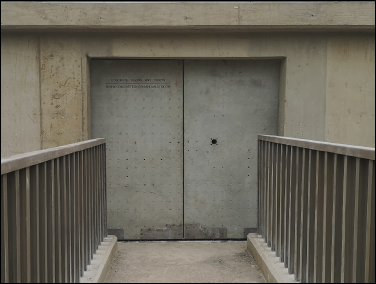

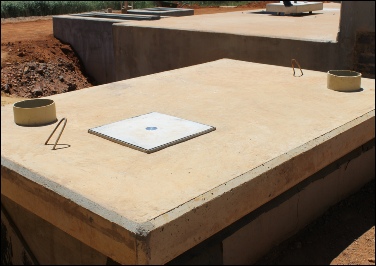
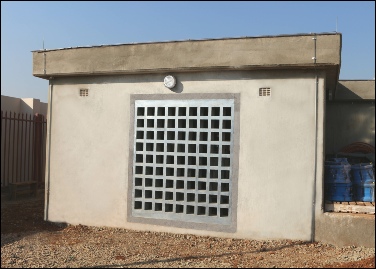

Four models are available - all are equipped with robust locking mechanisms :

This is the most popular sliding door in our range and very stable against overturning. It has a vertical concrete panel which closes off the doorway opening and an inwardly protruding horizontal 'platform', hence its name. A technical specification is available.
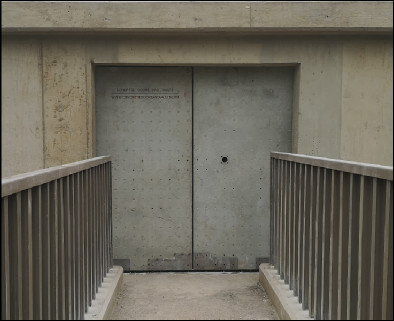
Similar to the L door, but in this case there are two doors that touch, toe to toe. Suitable for large doorways.

Instead of sliding parallel to the wall, as the above doors, the Slide-out door slides outwards and away from the wall. This is useful when there is no space inside.

This door is hinged to the wall at the top and hinged to the floor at the bottom. It has a wide base to prevent toppling in case of the hinges pulling out of the wall - it is therefore failsafe.

A number of vaults have been developed for various applications as follows :
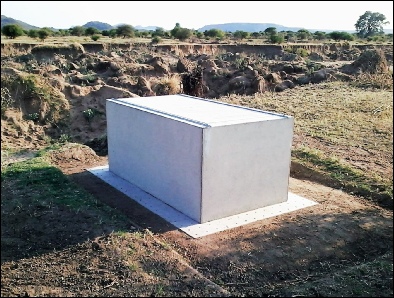
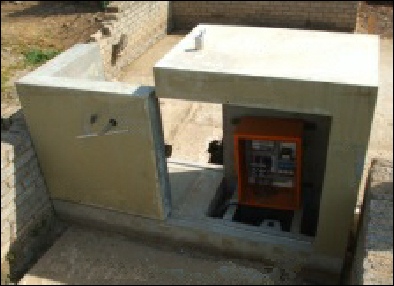

4. Mast Vault
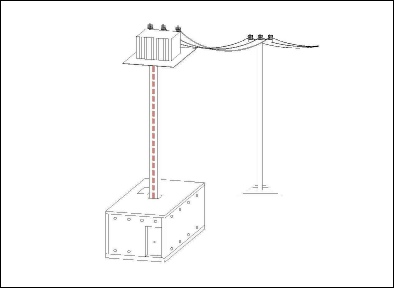
The lid screws up by using a custom made spindle (or 'opening tool'). It is then rotated 90 degrees, the tool partially retracted, and the lid can then be pushed open. Typically this vault is used for securing submersible pumps, including the corresponding electrical control panels.
The Slide-door vault consists of a base that has two rails for an L-shaped sliding door to run on. To close, the door runs beneath a roof stab supported by two fixed walls, which in turn are attached to the base. It is suitable for remote control panels, pumps, transformers, etc.
A new and innovative product - recently launched, the 'borehole vault' offers extreme protection against theft/vandalism of the submersible pump, control panel, meter and valve/s, and is easily retrofitted to existing boreholes.
The mast-vault consists of a tall mast (with external steel cladding) which elevates equipment such as transformers and solar panels sufficiently high to prevent vandalism. The box-like vault keeps the mast upright and also may be used to protect pumps, control panels, etc.

1. Screw Lid

Five concrete lids are discussed here, all having extremely robust locking mechanisms :
A customised tool is inserted into an access tube and turned to screw the lid out of the seat. The lid is now turned through 90 degrees, the tool is partially withdrawn, and the lid is rolled away on tracks. (It is opened and closed in the same way as the lid of the Screw-lid vault ). In this way relatively large and heavy lids may be opened without requiring a crane. Suitable for reservoirs, valve-chambers, etc.
-

A customised tool is inserted into the access hole and used to unlock two opposite rack-levers below. The lid may now be lifted out of the slab by the tool's handle. Suitable for small manholes in valve chambers or reservoirs.

Same opening sequence as above. The relatively small hand-lid fits into a concrete ‘seat’ which is large enough to cover a relatively large manhole in a roofslab. The seat can be detached from the roof-slab, from the inside of the valve-chamber, in case a large valve needs to be installed/replaced. Suitable for retro-fitting valve chambers that have relatively large (steel) lids that have been vandalised.
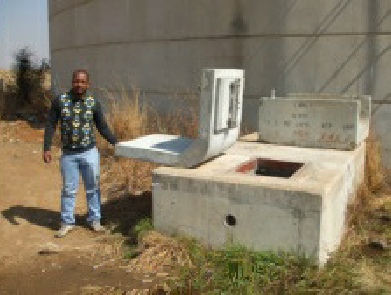
Suitable for relatively large manholes in valve chambers where quick and easy access is required, and where the opened lid must be clear of the manhole. Once the custom tool has unlocked the lid, the lid may be rotated through 90 degrees.
6. Sliding lid
This product has application where a customer requires a fully made roof slab, (complete with a lockable lid), to cover a existing valve chamber.
This lid is supported by the roof-slab, and once unlocked, slides open with relative ease. Suitable for valve chambers where a large opening is required for servicing the valves etc.

Three types of vents, one for air flow, and two suitable for lowering the humidity in valve chambers, are discussed here :
1. Panel-Vent
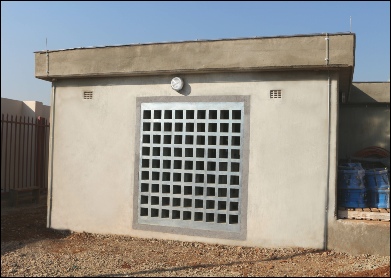
The Panel Vent consists of a matrix of air passages. Each air passage has internal dimensions of 146mm by 146mm (X and Y axes respectively), and the Z axis dimension is made to be the same as the thickness of the wall. It is evident that more or fewer air passage columns, and/or rows can be used depending on ventilation requirements.

Focus on Products
Concrete Doors and Vaults (Pty) Ltd specializes in the development and manufacture of novel and relatively high-tech reinforced concrete products that offer extreme protection against theft and vandalism of vulnerable infrastructure in the water, power, and telecoms sectors. The products are mostly made from heavily reinforced high strength 50/60 MPa concrete, and include :
(a) A variety of sliding doors for securing pump stations and sub-stations
(b) A variety of vaults for securing boreholes and control panels
(c) A variety of lockable lids for securing valve chambers
(d) Ventilation panels for generator rooms
(e) High masts for elevating Eskom transformers and solar panels out of the reach of vandals
(f) The above products are all secured by extremely robust patented locking mechanisms
The latest development is a hybrid concrete chamber complete with concrete sliding door as in (a), optional secure lid in the roof slab as in (c) (for the case of certain borehole pump houses) and an optional high mast as in (e) protruding out of the centre of the roof slab (for the case of elevated transformers and solar panels). The mast has an outer steel shell encasing the concrete and an internal duct for the cable coming down from the Eskom transformer / solar panels.
The company has a core team of seven employees with Dr. Papenfus as director.
The 146mm by 146mm openings are too small for even a child’s head to go through, and are lined with steel plates welded together, which are in effect permanent shutters. The spaces around the air passages are filled with 60 MPa reinforced concrete. The final construction is extremely strong, robust, and vandal resistant.
Please visit our website on your desktop or laptop
for a more interactive experience.




Please visit our Facebook page for a more up-to-date presentation of our products.
Open your Facebook, then type
concretedoorsandvaults
1. Screw-lid Vault
2. Screw Lid
3. Seat & Lid
4. Fortress Pump Stations
5. Borehole Vault
6. Panel Vent
7. Sliding Concrete Doors
8. Extreme Protection
9. Tall Concrete Doors
10. Vaults in the Veld
11. Installing Borehole Vaults
13. Sliding Lids on Valve Chambers
14. Lids that keep Valve Chambers safe
15. Swing Doors for Pressure Towers
